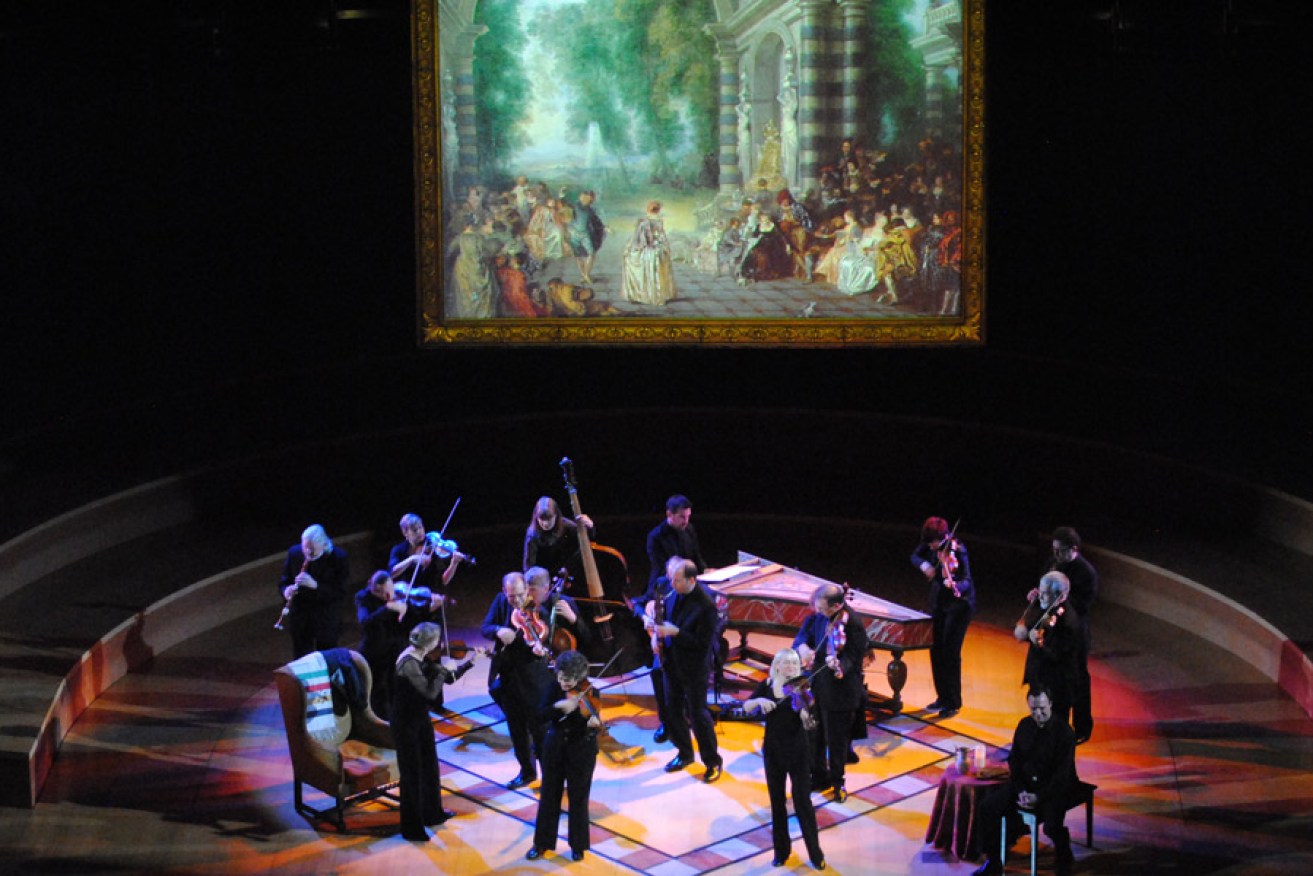Tafelmusik’s House of Dreams

Tafelmusik Baroque Orchestra. Photo: Glenn Davidson
House of Dreams by Canada’s Tafelmusik Baroque Orchestra offers the audience a charming stroll through the creative and cultural landscape of the Baroque period.
The works of Bach, Handel, Vivaldi, Purcell and lesser-known composers Jan Pieterszoon Sweelinck, Marin Marais and Georg Philipp Telemann are given an artistic context with projections of works by the leading painters of the day: Vermeer, Canaletto, Titian and Watteau. This is all overlaid with the stories of five houses, each one significant to a particular composer, from London to Venice and then on to Delft, Paris and Leipzig.
Tafelmusik’s artistic director (and violinist) Jeanne Lamon and House of Dreams’ creator (and double bass player) Alison Mackay have together delivered an impressive concert. The projections – little more than a slideshow, but enjoyable nonetheless – do expand the music to tell the story of an important period in cultural history: the music, the art, the architecture, and the social mores are all brought to life more vividly.
Canadian actor Blair Williams, in the potentially awkward role of the narrator, offers additional insights to the period, complementing the performance and gently nurturing the audience’s appreciation of the works. His best line of the night was this: “Music is the companion of joy and the medicine of sorrow.” Indeed.
There is passion, too, in the soulful instrumentation of the players and the warm interpretation of the multiple scores. Each player is a master of period performance, giving Tafelmusick an authenticity sometimes not heard in modern renditions of these pieces. The period instruments, especially the harpsichord (Olivier Fortin) and the lute (Lucas Harris), are especially good. Dominic Teresi on bassoon was also a highlight.
In a reinterpretation of the concert repertoire, the entire program is performed without notation, giving a fluidity and informality to the staging. The players are free to move about and respond to each other, the music and the audience. This is a refreshing departure from the more rigid performance of musicians seated behind their music stands. The movements were a little too choreographed at first, but it was still a welcome innovation to the concert experience. It’s also serious testament to the orchestra members’ abilities that they can play this diverse program with such ease without their scores.
This delightful concert at the Adelaide Town Hall was presented by the Adelaide Festival in association with Musica Viva. 2015 is a special year for Musica Viva, marking its 70th anniversary of presenting fine music to Australian audiences.
Sadly, there was only one performance in Adelaide – you just have time to get to Brisbane for the last performance in this Australian tour. And you can always buy the CD, out now on their own label.
Click here for more 2015 Adelaide Festival stories and reviews.




